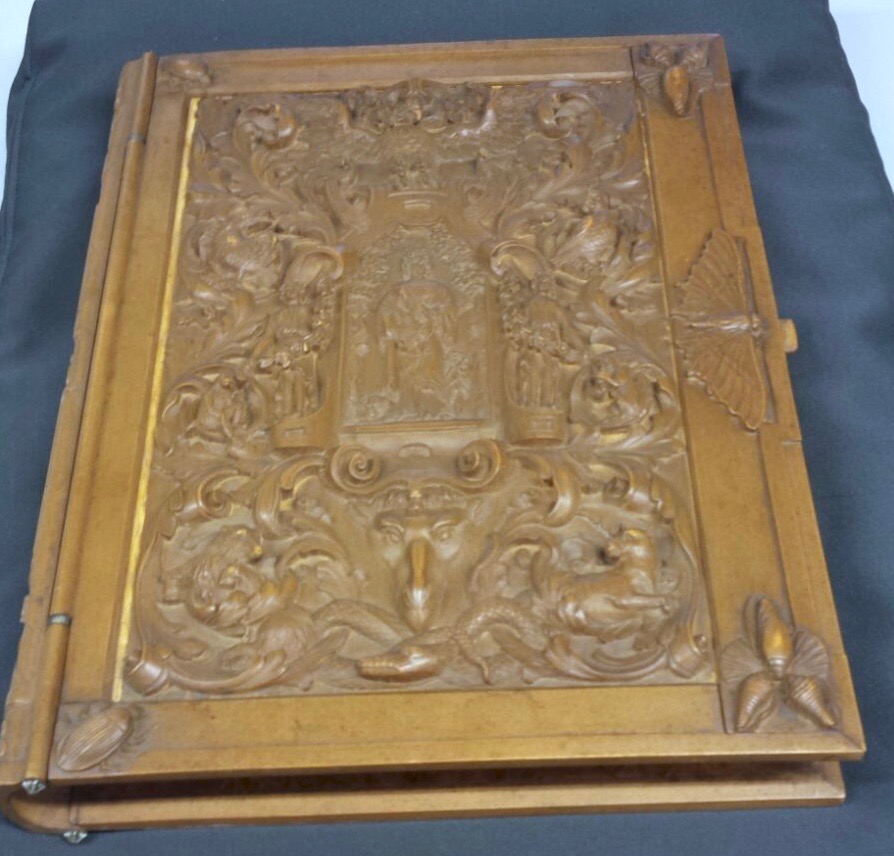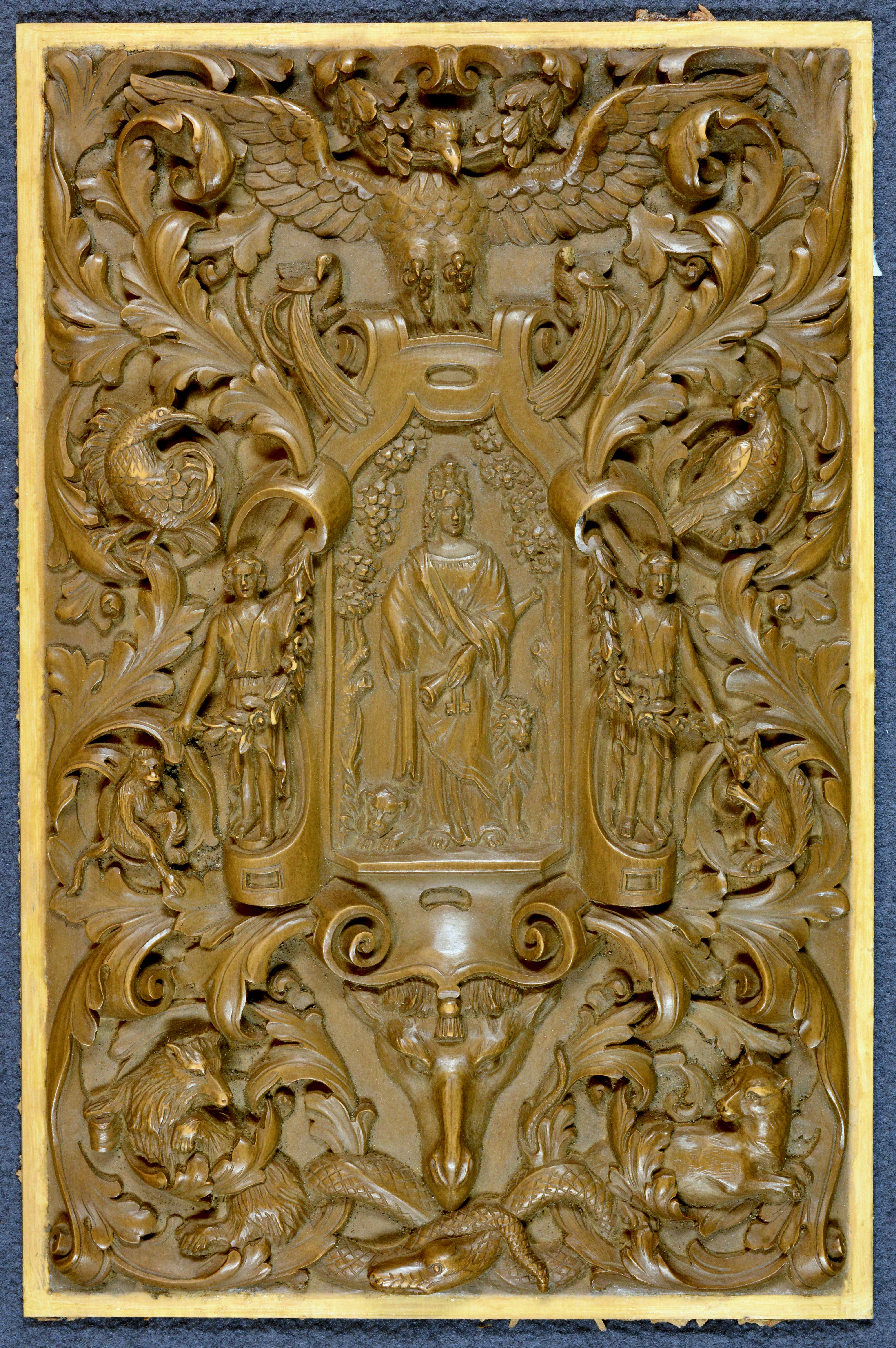 This is another project from my time at the Stadsarchief Amsterdam in the Netherlands. I am not sure if this should be considered book conservation or furniture conservation, but it was an interesting project either way. It is an intricately carved wood cased book made of lime wood. Unlike most wooden board books, the spine and clasp are also carved wood.
This is another project from my time at the Stadsarchief Amsterdam in the Netherlands. I am not sure if this should be considered book conservation or furniture conservation, but it was an interesting project either way. It is an intricately carved wood cased book made of lime wood. Unlike most wooden board books, the spine and clasp are also carved wood.
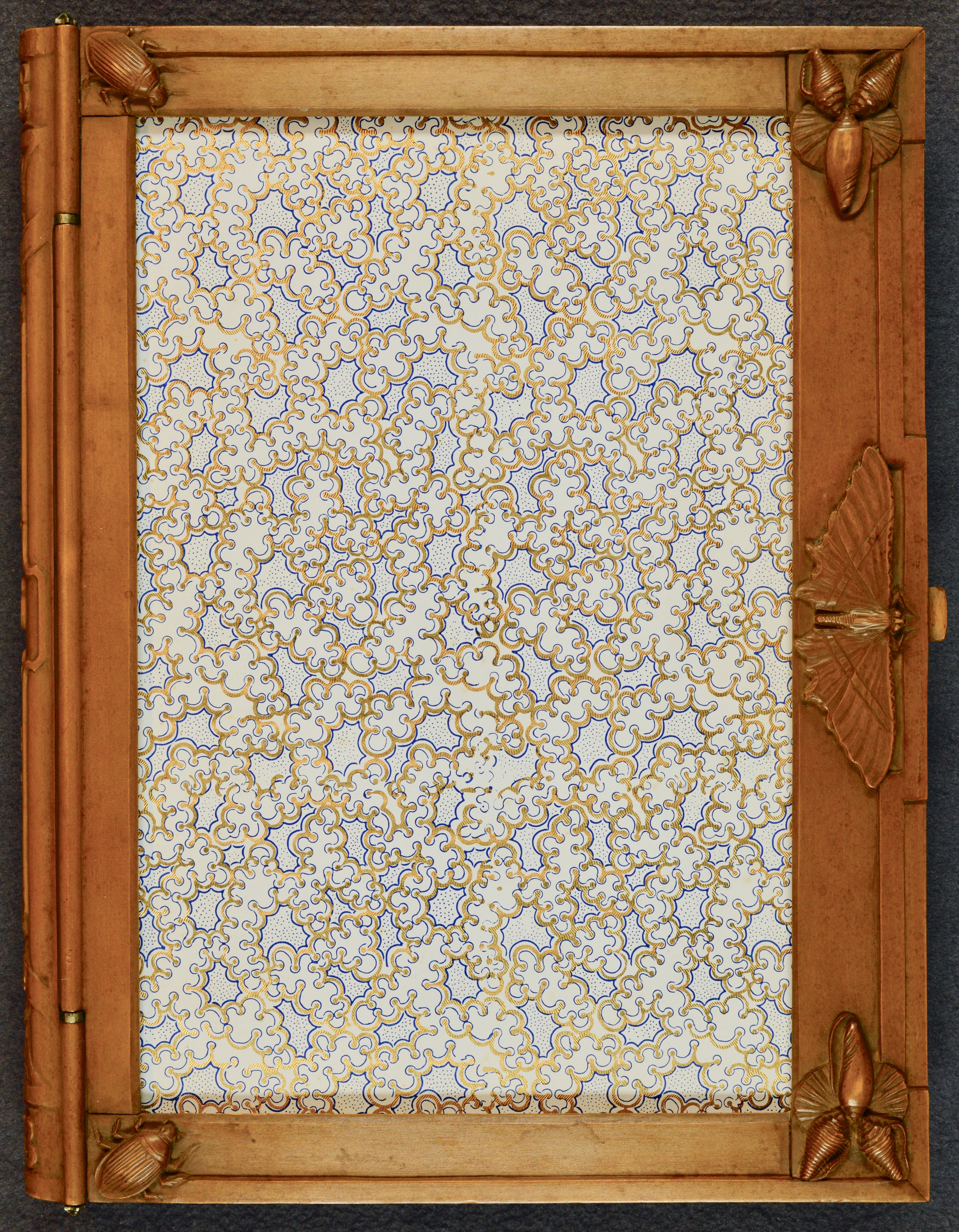
The boards are constructed like frame and panel cabinet doors. It is a beautiful construction with one dire flaw—the ‘pastedowns’ are made of veneer. The frame and panel contract and expand as the temperature and humidity change, which is normal. This ‘heaving’ of the lime wood caused the restricted veneer to crack along the edges of the panel. This also dislodged the adhesive which kept the panel in the frame, and the two separated.

After consulting with furniture conservator Hendrik van der Poel (Hendrik_van_der_Poel: LinkedIn), I began the process of removing the old animal glue. I used thick Methylcellulose to soften the adhesive before gently scraping it off. Methylcellulose is not typically what furniture conservators use, but I had to improvise since I was working in a books workshop with different supplies. This treatment was approved before beginning.
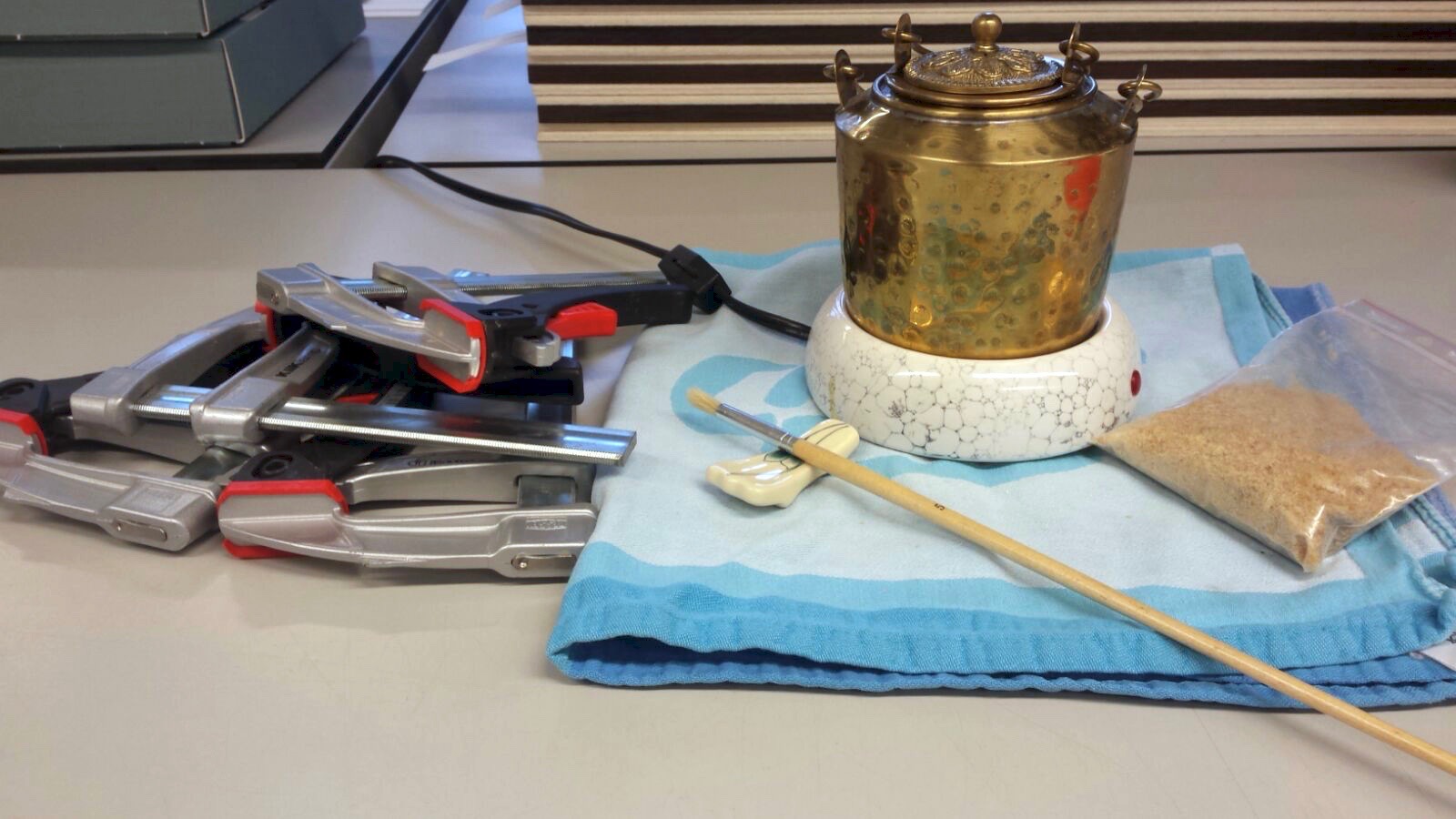
I borrowed a few tools to reunite the frame and panel. The old bookbinder glue pot was again used for its original purpose! (In a way.) The adhesive used was rabbit skin glue.
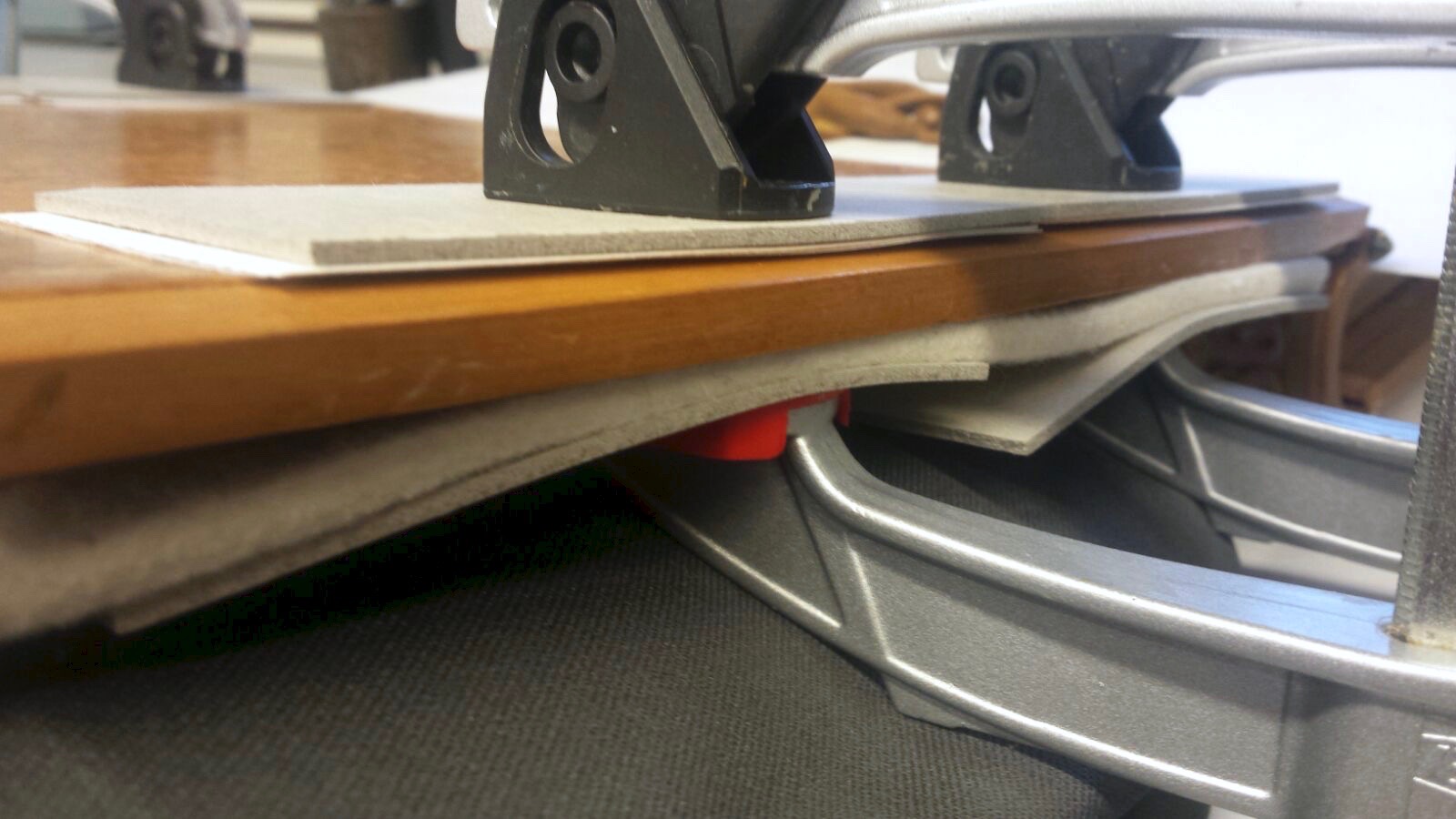
Furniture clamps were used to hold the frame in place as the glue dried. Several layers of thick felts were positioned over the carvings to prevent damage from the clamps. Bondina, blotter, and millboard were placed between the clamps and veneer to avoid any animal glue seeping out of the crack and adhering the panel to the clamps.

The space around the panel remains open to allow for any future expansion and contraction.
